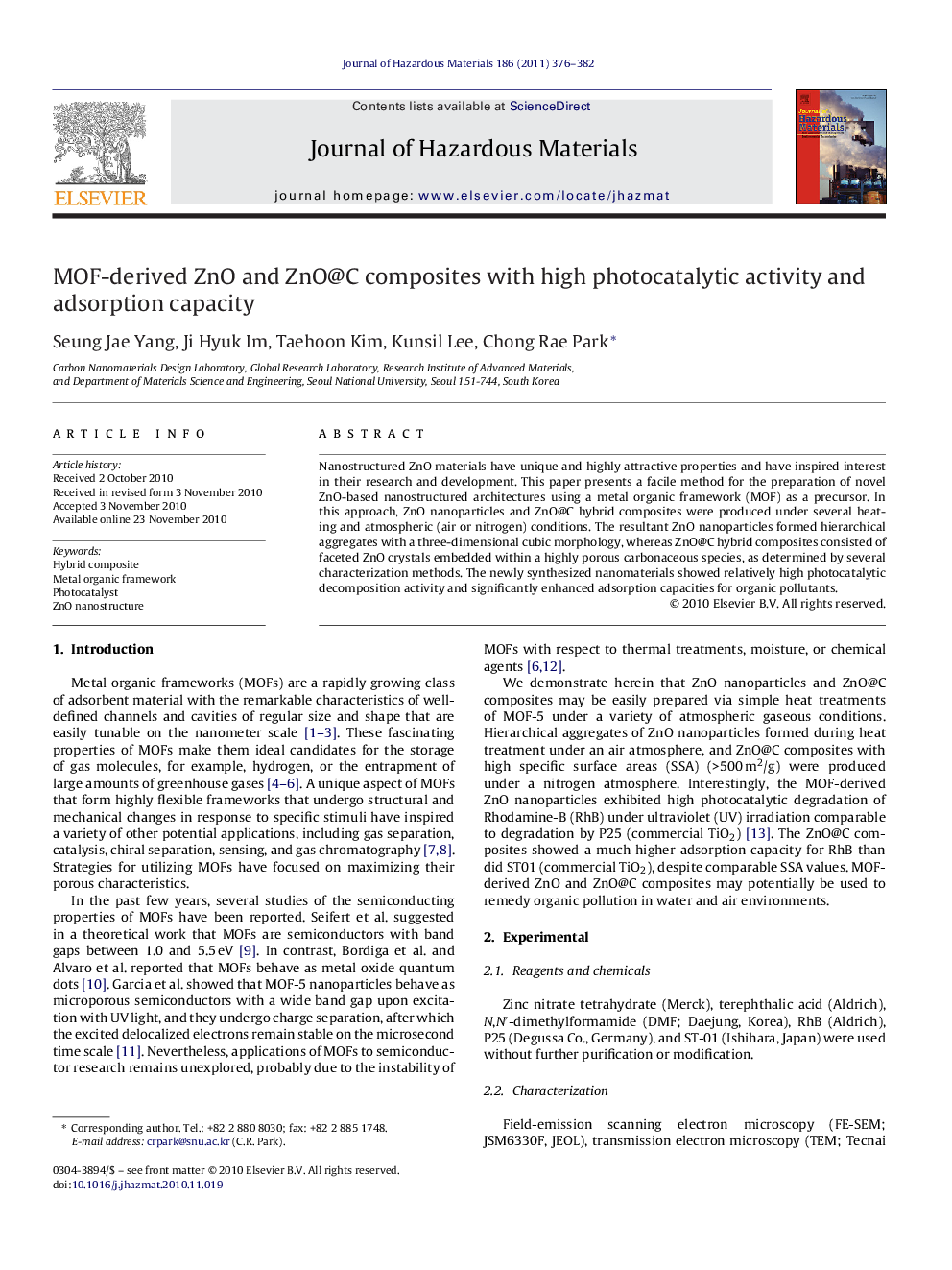| Article ID | Journal | Published Year | Pages | File Type |
|---|---|---|---|---|
| 10372738 | Journal of Hazardous Materials | 2011 | 7 Pages |
Abstract
Nanostructured ZnO materials have unique and highly attractive properties and have inspired interest in their research and development. This paper presents a facile method for the preparation of novel ZnO-based nanostructured architectures using a metal organic framework (MOF) as a precursor. In this approach, ZnO nanoparticles and ZnO@C hybrid composites were produced under several heating and atmospheric (air or nitrogen) conditions. The resultant ZnO nanoparticles formed hierarchical aggregates with a three-dimensional cubic morphology, whereas ZnO@C hybrid composites consisted of faceted ZnO crystals embedded within a highly porous carbonaceous species, as determined by several characterization methods. The newly synthesized nanomaterials showed relatively high photocatalytic decomposition activity and significantly enhanced adsorption capacities for organic pollutants.
Related Topics
Physical Sciences and Engineering
Chemical Engineering
Chemical Health and Safety
Authors
Seung Jae Yang, Ji Hyuk Im, Taehoon Kim, Kunsil Lee, Chong Rae Park,
